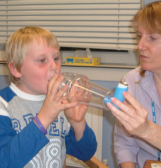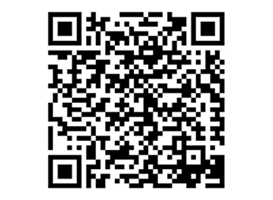

Personal Viral Induced Wheeze Action Plan
Advice for professionals to be used with parents and carers
If you / your child is:
- Too breathless to talk / eat or drink
- Has blue lips
- Having symptoms of cough/wheeze or breathlessness which are getting worse despite treatment
- Confused and drowsy
You need urgent help
Give the blue reliever (salbutamol) inhaler through a spacer device - 1 puff at a time every 60 seconds up to a maximum of 10 puffs. Repeat every 10 minutes until the ambulance arrives.
Keep child in upright position and reassure them
If you / your child is:
- Wheezing and breathless and the reliever treatment is not lasting 4 hours
- Having day-time and night-time symptoms of cough or wheeze
- Too breathless to run and play
You need to contact your GP Surgery today
Immediately contact your GP or NHS 111 and make an appointment for your child to be seen that day face to face
Increase blue (salbutamol) reliever inhaler 6-10 puffs every 4 hours
If your child’s breathing is not laboured or fast and he/she is able to continue their normal day to day activities
Give 2-4 puffs blue (salbutamol) reliever inhaler every 4 hours until symptoms improve.
This guidance has been reviewed and adapted by healthcare professionals across the Black Country Integrated Care System.
Choose appropriate sized spacer with mask or mouthpiece if child is over 3 years.
- Shake the inhaler well and remove cap
- Fit the inhaler into the opening at the end of the spacer
- Place mask over the child’s face ensuring a good seal
- Press the inhaler once and allow the child to take 5 slow tidal breaths between each dose
- Remove the inhaler and shake between every puff

Repeat steps 2 – 5 for subsequent doses
Plastic spacers should be washed regularly as per manufacturer’s guidelines
For videos on using your child’s inhaler and spacer correctly see Using your Inhalers 
No, not necessarily. This is a different condition from asthma, although a few children do go on to develop asthma.
Children with asthma:
- Are often wheezy, even when they do not have a cough or cold
- Usually have a family history of asthma and allergy
- Are generally more breathless than their friends when they run around or become wheezy on exercise.
- Often have a regular night time cough
If you are worried that your child has asthma, you should make an appointment to see your GP or GP asthma nurse. You also discuss your concerns with Asthma+Lung uk, who can provide more advice and guidance. Please click this link for more information.
Although your child has not been diagnosed with asthma, your GP asthma nurse will usually be happy to review children with viral induced wheeze. If your child has been discharged from hospital, you should arrange for them to be seen in the next 48 hours by your GP or GP practice nurse. Children can have a cough and wheeze for several days as they recover from their illness. You can use 2-4 puffs every four hours as needed. If your child needs any more salbutamol please look at the viral induced wheeze plan as above. You should arrange for them to be reviewed by your GP if they continue to have lots of problems with wheeze once they have recovered from their cold.